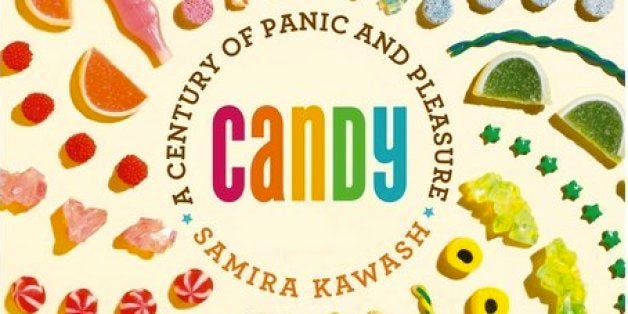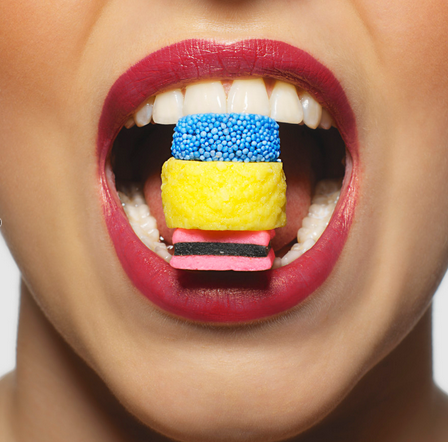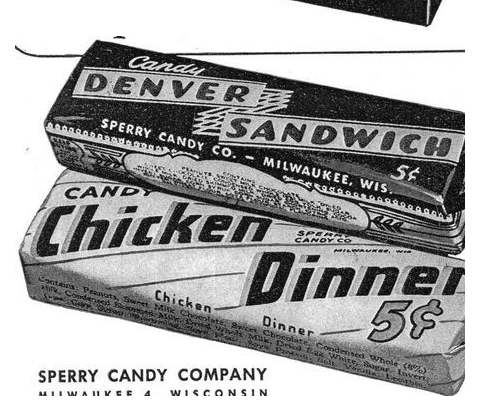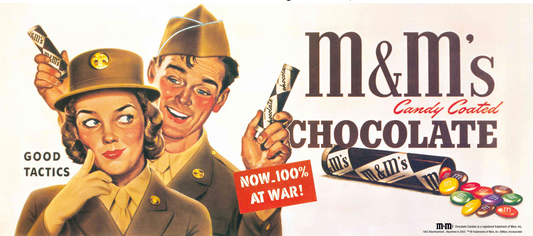
Just in time for Halloween, professor Samira Kawash has come out with a 350-page book all about everyone's favorite sugar snack: candy. Her book, Candy: A Century of Panic and Pleasure, goes through the history of how America developed a sweet tooth and how the candy industry tried to make sure it stayed that way.
In a lot of ways, this is a book perfect for food history buffs. Along with a good history of candy, Kawash also incorporates a history of junk food and diet within the pages. As you prepare for Halloween, dazzle your friends with these facts from her book:
Advertisement
America's Sweet Tooth Happened (Almost) Overnight

Getty
Candy might seem like a grocery store staple, but it wasn't always omnipresent. In 1850, the value of manufactured candy was about $3 million. In 1900, that figure leapt to $60 million. In 1948, the equivalent figure was over $1 billion.
Americans Eat More Candy Than Citrus

Getty
In 2009, America's per capita candy consumption was 24 pounds. Compare that to citrus fruit (20 pounds), rice (21 pounds), cheese (30 pounds) and fish/shellfish (16 pounds).
People Used To Eat Cream Cheese & Marshmallow Sandwiches

Getty
The first printed evidence for s'mores is in a 1927 Girl Scouts of America handbook. But America's fascination for marshmallow occurred even before that, with popularized now-vintage recipes that included cream cheese and marshmallow sandwiches, and baked lima beans topped with bacon and marshmallows.
Advertisement
Chicken Dinner Was Actually The Name Of A Candy Bar

CandyProfessor.com
In the early 1900s, the candy industry made a big push to have people eat candy for lunch. In 1903, Hershey's promoted its milk chocolate bar with the slogan "More sustaining than meat." In the following decade, there was a chocolate and peanut butter bar titled "Klein's Lunch Bar." From there, despite having no bread in their ingredients, candy bars often adopted the word "sandwich" within their names, such as the Denver Sandwich or the Waleco Sandwich Bar. Then there was the Chicken Dinner bar, which contained no poultry products but did contain chocolate and nuts.
Candy Manufacturers Couldn't Keep Up With The Army's Demand For Candy

Mars/Louise Mirrer
Candy was considered a necessary ration for American soldiers, thanks to its alleged ability to keep them alert and sated. In fact, the army demanded so much candy during wartime that manufacturers struggled with providing enough to consumers.So how much candy were soldiers eating? Estimations clock in at around 50 pounds per year, per soldier. The army and navy's need for candy got so bad that in 1944, U.S. candy manufacturers were told to set aside 50 percent of production of five-cent candies to government agencies.Learn more here.
Candy Corn Wasn't Always A Part Of Halloween

Getty
In the first part of the 20th century, Halloween was celebrated something like a fall festival -- treats included popcorn, apples, donuts and cider. Candy makers didn't even see Halloween as an opportunity to grow sales. But starting in the 1950s, as Halloween became more associated with the color orange, candy corn became more accepted as part of the holiday.
Advertisement
There Probably Aren't Razor Blades In Your Candy

Getty
Remember when you were a kid and your parents would go through all your candy before you could eat in in case there were pins or razor blades or poison on the candy? It turns out that all of those newspaper reports over the years that mentions kids getting injured from candy are pretty much all made up. It's not to say that it couldn't happen, but reports have been greatly exaggerated.